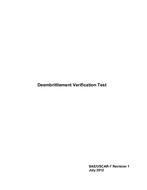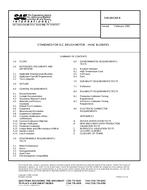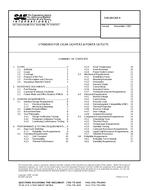Description
This document defines: 1. A default method for those companies that require a pre-defined approach and 2. A protocol for those companies that wish to develop their own test methods.
The default method is intended for use by electronic equipment manufacturers, repair facilities, or programs which, for a variety of reasons, may be unable to develop methods specific to their own products and applications. It is to be used when little or no other information is available to define, conduct, and interpret results from reliability, qualification, or other tests for electronic equipment containing Pb-free solder. The default method is intended to be conservative, i.e., it is biased toward minimizing the risk to users of AHP electronic equipment.
The protocol is intended for use by manufacturers or repair facilities which have the necessary resources to design and conduct reliability, qualification, or process development tests that are specific to their products, their operating conditions, and their applications. Users of the protocol will have the necessary knowledge, experience, and data to customize their own methods for designing, conducting, and interpreting results from the data. Key to developing a protocol is a firm understanding of all material properties for the Pb-free material in question as well as knowledge of package- and board-level attributes as described in Section 4.1.1. As an example, research has shown that the mechanisms for creep are very different between SnPb and Tin-Silver-Copper (SAC) solders. Understanding these mechanisms is key to determining critical test parameters such as dwell time for thermal cycling. The protocol portion of this document provides guidance on performing sufficient characterization of new materials in order to accurately define test parameters.
Product Details
- Published:
- 02/12/2018
- File Size:
- 1 file , 790 KB




